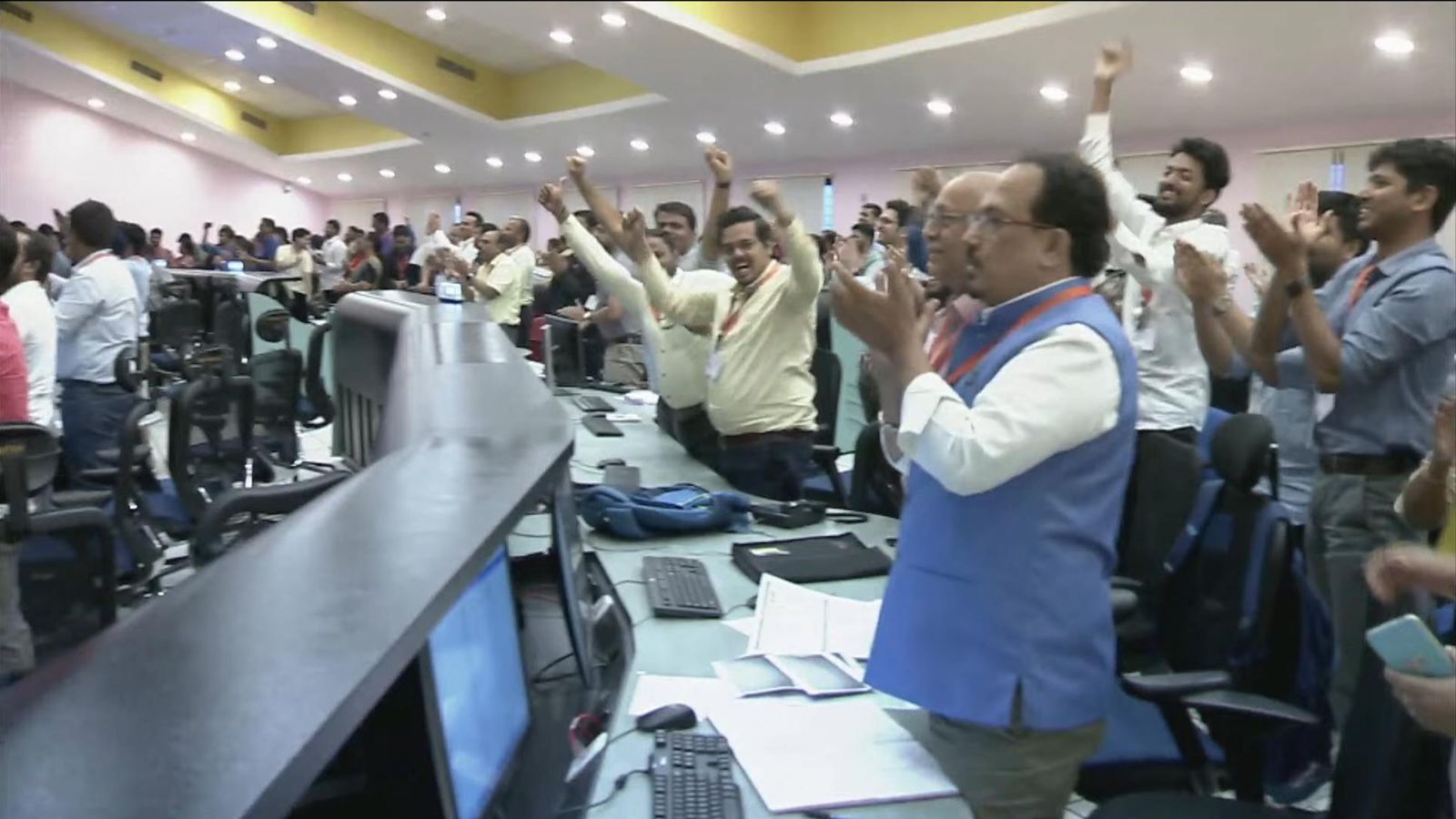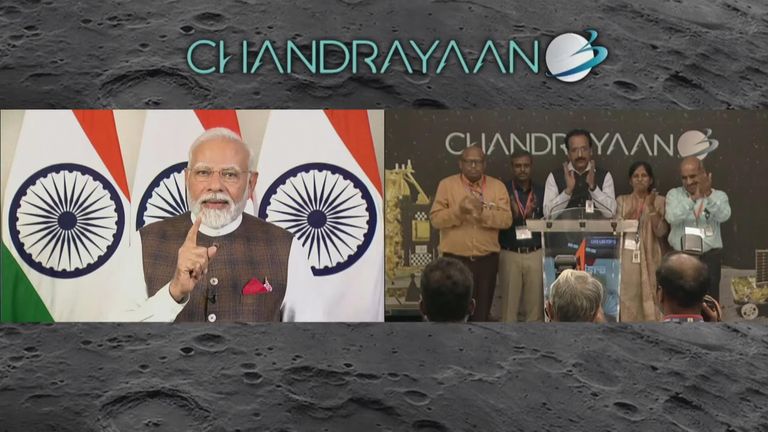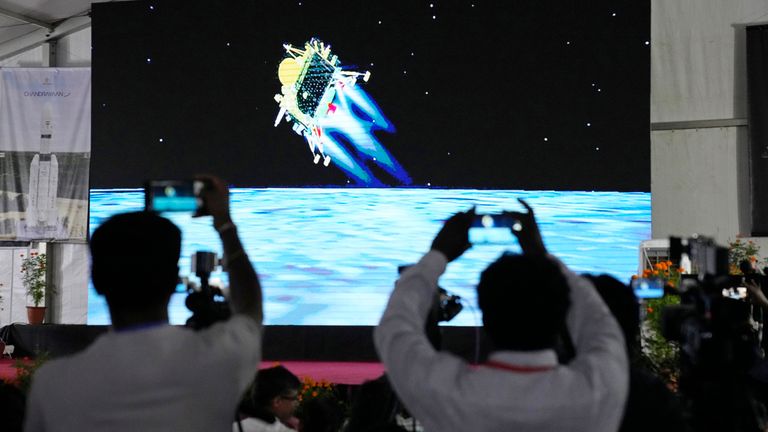India has become the first country to successfully land a spacecraft on the moon’s south pole.
Chandrayaan-3 was aiming to become the first spacecraft to touch down in a region of the lunar surface thought to contain deep craters with water ice.
It touched down six weeks after launching on board a rocket from a spaceport in Andhra Pradesh.
India moon landing – live updates
The successful landing was met with cheers and applause from mission control at Satish Dhawan Space Centre.
Prime Minister Narendra Modi joined a conference call at the space centre to watch the landing, waving an Indian flag when the spacecraft landed.
Making a triumphant speech to the Space Research Organisation, he said: “This is the heartbeat of 1.4bn people. This is the new India, the new beginning, the new thinking of the new efforts.
“This is a feature of the shine of India – we made a promise and we made it true on the surface of the moon.
“This is a historic moment, and for every Indian, we are all very proud.”
Turning his attention to the wider world, he said: “India’s successful moon mission is not just India’s alone.
“We can all aspire for the moon and beyond.”
He said India will now look into a future human flight mission to the moon.
Thousands of people across India crowded in offices, shops, homes and restaurants eagerly waiting to witness the outcome of the mission.
What happens now?
Following the successful landing, Chandrayaan-3 will only remain functional for two weeks, during which it will run a series of experiments to determine the mineral composition of the moon’s surface.
Much of the work will be done by a rover, which will be deployed by the spacecraft’s two-metre-high lander.
Scientists have a particular interest in water ice, as it could be used for fuel, oxygen, and drinking water – with the mission laying the groundwork for a potential permanent base.
India’s successful landing follows Russia’s Luna-25 spacecraft crashing into the moon, as it attempted to beat India to the unexplored lunar south pole.
Previous attempts by India have also failed, with the south pole’s rough terrain making landings difficult.




